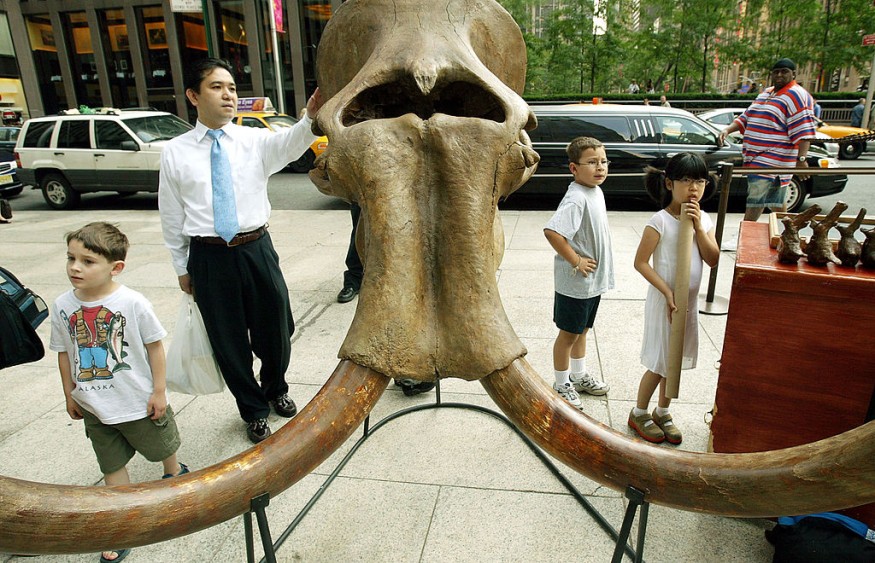
An unexpected object was dug up by a family in Mexico while building a toilet cistern in their yard - a one-in-a-million turn of events, indeed.
A remarkable 10,000-year-old mammoth bone was found in a private property owned by the Morales family in San Lorenzo Toxico, Mexico, last month. The family were manually excavating land to build a cistern when the palaeontological remain showed at a depth of just over 7 feet, NewsWeek reports. Fabian Morales first thought it was a tepetate, Mexican term for a geological horizon, a hardened soil found in Mexican volcanic regions.
The ancient mammoth fossil was reported to the National Institute of Anthropology and History (INAH). Archaeologist Ana Laura Navarro Martinez assigned to the INAH State of Mexico Center who studies bones believed it to be up to 10,000 years old.
Digging Hole Exposes a Giant
Experts then identified the bone to be a femur and jawbone of a proboscidean - any of the group of mammals that includes elephants and their extinct relatives - that could be a 10,000-year-old Columbian mammoth (Mammuthus columbi).
A statement from INAH obtained by Zenger News says the bone's dimensions range between 26 and 50 inches.
"The Ministry of Culture, through INAH, has recommended a rescue project to lift the bone remains and a segment of charred organic matter.
"A mandible and a femur of a proboscidean, identified by researchers from the National Institute of Anthropology and History (INAH) in a private property in the town of San Lorenzo Toxico, municipality of Ixtlahuaca, represent the first traces of megafauna recorded in this locality in the State of Mexico."
According to Martinez, the bones only tell us that they belong to the Proboscidea family (a large mammal with a trunk) for now. "It will be until megafauna specialists do the analysis when it will be defined whether they belong to a specimen of the Columbian mammoth species, already recorded in the Toluca Valley," she said.
Digging to Understand the Megafauna
The experts conducted analysis and used carbon dating to determine where the bone came from, whether it came from the same individual, how old it was, and whether it is male or female.
According to a statement, one factor that would allow carbon-14 dating is the presence of carbonized organic matter near the location of the bones. "Although it would be necessary to define whether such organic material - perhaps belonging to an ancient tree - is associated with the same geological stratum as that of the bone remains, its dating would provide more precise information on the age of the ensemble," the statement continues.
In addition, the femur and jaw were reported to be in a good state of preservation, aside from the femoral head which got hit by a pick during the excavation for the cistern. Martinez notes this discovery could "allow us to collect the greatest amount of information on the site, seeking to better understand the megafauna that populated the Toluca Valley."
© 2025 NatureWorldNews.com All rights reserved. Do not reproduce without permission.






